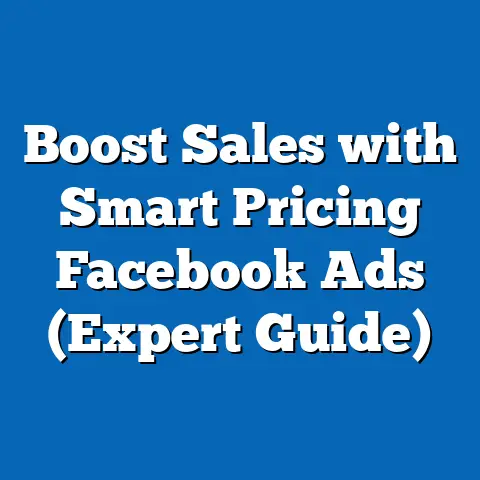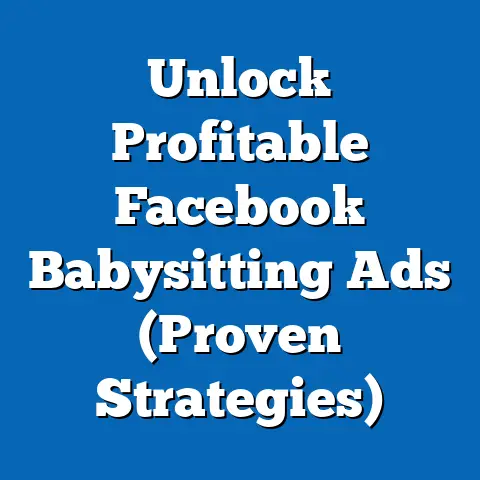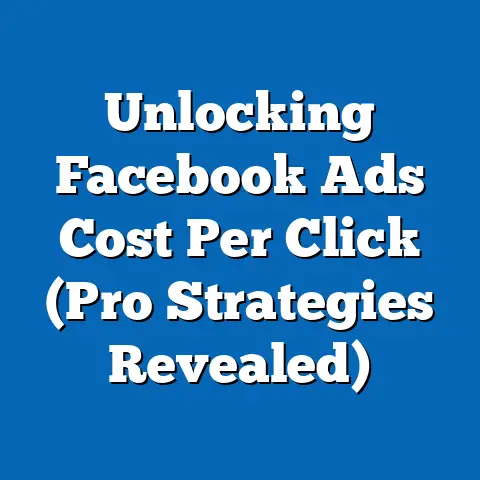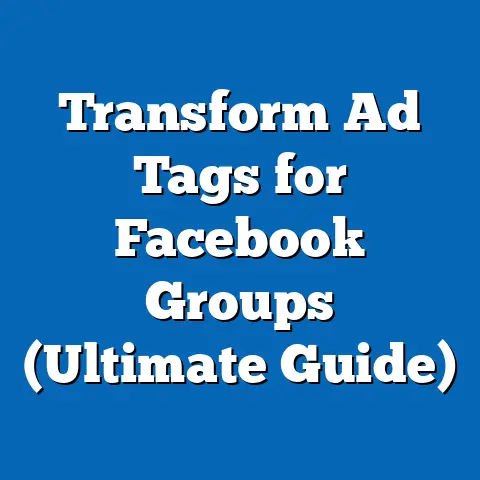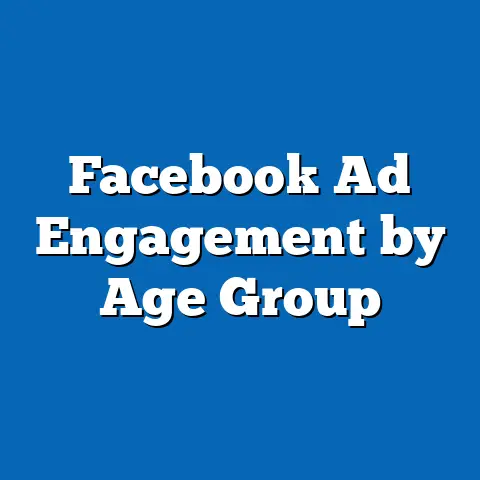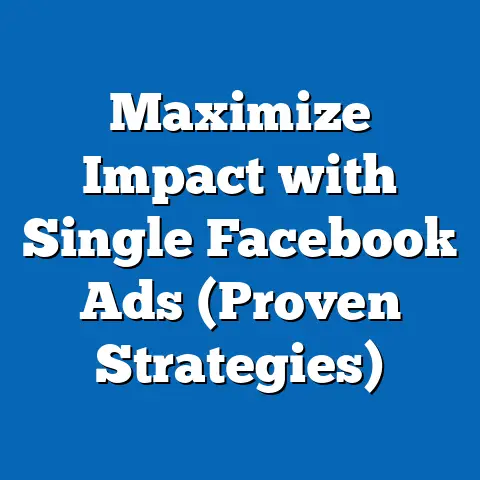Facebook Ads: Mastering Engagement (Strategic Insights)
Crafting Facebook ads is a lot like planting a garden. You can’t just throw seeds on the ground and expect a bountiful harvest. You need to understand the soil (your audience), the climate (the Facebook landscape), and the timing (when and how to engage). Just as a gardener must nurture their plants, marketers must grasp the intricacies of audience engagement, ad placement, and content quality to ensure their Facebook advertising campaigns flourish. I’ve seen firsthand how a well-tended ad campaign can blossom into a thriving community, and I’m excited to share the insights I’ve gained along the way.
1. Understanding Engagement in the Facebook Ecosystem
Engagement on Facebook isn’t just about vanity metrics; it’s the lifeblood of a successful ad campaign. It’s the measure of how well your message resonates with your audience, and it signals to Facebook that your ad is valuable. Higher engagement leads to lower costs and better reach.
What is Engagement?
Within the context of Facebook ads, engagement encompasses a variety of interactions, including:
- Likes: A simple expression of approval or interest.
- Shares: When someone finds your ad valuable enough to share with their network.
- Comments: A direct way for users to express their thoughts, ask questions, or provide feedback.
- Click-Through Rate (CTR): The percentage of people who see your ad and click on it to learn more.
- Saves: When someone saves your ad to view it later.
- Reactions: Beyond likes, reactions offer a more nuanced way for users to express their emotions (e.g., love, haha, wow, sad, angry).
Why is Engagement Important?
Engagement is crucial for several reasons:
- Building Relationships: Engagement fosters a two-way dialogue with your audience, creating a sense of connection and trust.
- Fostering Community: Encouraging interaction around your brand builds a community of loyal followers.
- Improving Ad Relevance: Facebook’s algorithm favors ads with high engagement, leading to better placement and lower costs. I once saw a campaign’s cost per click (CPC) drop by 40% simply by improving the ad copy to encourage more comments.
- Increasing Brand Awareness: Shares and comments expose your brand to a wider audience, organically expanding your reach.
- Driving Conversions: Engaged users are more likely to become customers. They’re already invested in your brand and more receptive to your offers.
Takeaway: Engagement is more than just numbers; it’s about building meaningful connections with your audience. Understanding the different types of engagement and their impact is the first step to mastering your Facebook ad strategy.
2. The Anatomy of a Compelling Facebook Ad
A successful Facebook ad isn’t just a pretty picture; it’s a carefully crafted message that resonates with your target audience. Let’s break down the key components:
Visuals:
- Eye-Catching Images or Videos: Your visual is the first thing people see, so it needs to grab their attention. Use high-quality images or videos that are relevant to your message.
- Brand Consistency: Ensure your visuals align with your brand’s overall aesthetic.
- Mobile Optimization: Most Facebook users are on mobile, so make sure your visuals look good on smaller screens. I always recommend testing your ads on different devices to ensure optimal viewing.
Copy:
- Headline: This is your chance to make a strong first impression. Keep it concise, attention-grabbing, and relevant to your offer.
- Body Text: Expand on your headline and explain the benefits of your product or service. Use clear, concise language and focus on solving your audience’s problems.
- Call to Action (CTA): Tell people what you want them to do. Use strong action verbs like “Shop Now,” “Learn More,” or “Sign Up.”
Understanding Your Audience’s Pain Points and Desires:
The most effective Facebook ads speak directly to the needs and desires of the target audience. This requires understanding their:
- Pain Points: What problems are they trying to solve? What are their frustrations?
- Desires: What are their goals? What do they aspire to achieve?
- Motivations: What drives their purchasing decisions?
Tailoring Ad Content:
Once you understand your audience, you can tailor your ad content to resonate with them. This means:
- Using Language They Understand: Avoid jargon and use language that is familiar and relatable.
- Highlighting Relevant Benefits: Focus on the benefits that matter most to your audience.
- Addressing Their Concerns: Acknowledge their concerns and offer solutions.
Example:
Let’s say you’re selling a time management app targeted at busy entrepreneurs.
- Instead of: “Our app helps you manage your time.”
- Try: “Feeling overwhelmed? Reclaim your time and boost your productivity with our simple time management app.”
Takeaway: A compelling Facebook ad is a combination of eye-catching visuals, persuasive copy, and a clear call to action, all tailored to the specific needs and desires of your target audience.
3. Targeting the Right Audience
Even the most beautifully crafted ad will fail if it’s shown to the wrong people. Facebook’s targeting options are incredibly powerful, allowing you to reach specific demographics, interests, and behaviors.
Facebook’s Targeting Options:
- Demographics: Target users based on age, gender, location, education, job title, and more.
- Interests: Target users based on their interests, hobbies, and the pages they like.
- Behaviors: Target users based on their online activities, such as purchase behavior, device usage, and travel habits.
- Custom Audiences: Upload your own customer data (e.g., email lists, phone numbers) to create custom audiences of existing customers or leads.
- Lookalike Audiences: Create audiences that are similar to your existing customers or website visitors.
Conducting Audience Research:
Before you start targeting, it’s essential to conduct thorough audience research. This involves:
- Analyzing Your Existing Customers: Who are your current customers? What are their demographics, interests, and behaviors?
- Using Facebook Audience Insights: This tool provides valuable data about Facebook users, including their demographics, interests, and page likes.
- Surveying Your Audience: Ask your audience directly about their needs, desires, and preferences.
- Analyzing Competitor Audiences: See who is engaging with your competitors’ content.
Tools and Techniques:
- Facebook Audience Insights: A free tool that provides insights into Facebook users’ demographics, interests, and behaviors.
- Google Analytics: Track website visitors to understand their demographics and interests.
- Customer Relationship Management (CRM) Systems: Store and analyze customer data to identify patterns and trends.
- Surveys: Use online survey tools like SurveyMonkey or Google Forms to gather feedback from your audience.
Segmenting Target Audiences:
Once you’ve gathered enough data, you can segment your audience into smaller, more targeted groups. This allows you to create ads that are highly relevant to each segment.
Example:
Let’s say you’re selling online courses. You could segment your audience based on:
- Skill Level: Beginners, intermediate, advanced.
- Industry: Marketing, finance, technology.
- Goals: Career advancement, personal development, starting a business.
Takeaway: Effective targeting is crucial for maximizing engagement. By understanding your audience and using Facebook’s targeting options wisely, you can ensure that your ads are seen by the people who are most likely to be interested in your product or service.
4. Crafting Engaging Content
Now that you know who you’re targeting, it’s time to create content that will capture their attention and drive engagement.
Strategies for Compelling Ad Copy:
- Tell a Story: People love stories. Use storytelling to connect with your audience on an emotional level.
- Highlight Benefits, Not Features: Focus on how your product or service will improve their lives.
- Use Strong Action Verbs: Encourage people to take action with verbs like “Shop,” “Learn,” “Sign Up,” or “Discover.”
- Create a Sense of Urgency: Use language that creates a sense of urgency, such as “Limited Time Offer” or “Sale Ends Soon.”
- Ask Questions: Engage your audience by asking questions that encourage them to comment or share their thoughts.
- Keep it Concise: People have short attention spans, so get to the point quickly.
The Role of Eye-Catching Visuals and Videos:
- Use High-Quality Images and Videos: Blurry or pixelated visuals will turn people off.
- Optimize for Mobile: Ensure your visuals look good on smaller screens.
- Use Bright Colors and Contrasting Text: Make your visuals stand out from the newsfeed.
- Showcase Your Product or Service in Action: Help people visualize how they can benefit from your product or service.
- Use Videos to Tell a Story: Videos are a great way to capture attention and convey a message quickly.
Tips for Optimizing Images and Videos for Facebook:
- Image Size: Use the recommended image sizes for each ad format.
- Video Length: Keep videos short and engaging (ideally under 15 seconds).
- Captions: Add captions to your videos, as many people watch videos with the sound off.
- Thumbnails: Choose a compelling thumbnail that accurately represents your video.
Example:
Let’s say you’re promoting a new fitness program.
- Instead of: “Join our fitness program.”
- Try: “Transform your body and boost your confidence with our new fitness program. Get a personalized workout plan and expert coaching to help you reach your goals!” (accompanied by a before-and-after photo or a short video of people working out).
Takeaway: Engaging content is the key to capturing attention and driving interaction. By crafting compelling copy and using eye-catching visuals, you can create ads that resonate with your audience and achieve your marketing goals.
5. Utilizing Facebook Ad Formats
Facebook offers a variety of ad formats, each with its own strengths and weaknesses. Choosing the right format can significantly impact your engagement rates.
Popular Facebook Ad Formats:
- Image Ads: A single image with accompanying text. Simple and effective for showcasing a product or service.
- Video Ads: A video with accompanying text. Great for telling stories and capturing attention.
- Carousel Ads: Display multiple images or videos in a scrolling format. Ideal for showcasing multiple products or features.
- Slideshow Ads: Create a video-like experience using a series of images. A cost-effective alternative to video ads.
- Collection Ads: Combine a video or image with a catalog of products. Designed to drive sales and conversions.
- Instant Experience Ads: Full-screen, mobile-optimized experiences that load instantly. Great for immersive storytelling and showcasing products.
When and How to Use Each Format:
- Image Ads: Use for simple product promotions or brand awareness campaigns.
- Video Ads: Use for telling stories, demonstrating product features, or showcasing testimonials.
- Carousel Ads: Use for showcasing multiple products, highlighting different features of a single product, or telling a story in a sequential format.
- Slideshow Ads: Use as a cost-effective alternative to video ads, especially when you have limited video resources.
- Collection Ads: Use for driving sales and conversions by showcasing a catalog of products.
- Instant Experience Ads: Use for immersive storytelling, showcasing products in detail, or creating interactive experiences.
Examples of Successful Campaigns:
- Carousel Ads: A clothing retailer uses carousel ads to showcase different outfits for different occasions.
- Video Ads: A travel company uses video ads to showcase stunning destinations and inspire wanderlust.
- Collection Ads: An e-commerce store uses collection ads to showcase its latest product catalog and drive sales.
Takeaway: Choosing the right ad format is crucial for maximizing engagement. Consider your goals, target audience, and available resources when selecting an ad format. Experiment with different formats to see what works best for your business.
6. A/B Testing and Optimization
A/B testing is the process of comparing two versions of an ad to see which one performs better. This is an essential part of optimizing your Facebook ad campaigns for maximum engagement.
The Importance of A/B Testing:
- Identifying What Works: A/B testing helps you identify which elements of your ad resonate most with your audience.
- Improving Engagement Rates: By testing different headlines, images, and CTAs, you can optimize your ads for higher engagement rates.
- Lowering Costs: By identifying the most effective ads, you can lower your cost per click (CPC) and cost per acquisition (CPA).
- Maximizing ROI: By optimizing your ads for engagement and conversions, you can maximize your return on investment (ROI).
How to Set Up A/B Tests:
- Identify a Variable to Test: Choose one element of your ad to test, such as the headline, image, CTA, or targeting options.
- Create Two Versions of Your Ad: Create two versions of your ad, each with a different value for the variable you’re testing.
- Run Your Ads Simultaneously: Run both versions of your ad simultaneously to the same target audience.
- Track Your Results: Track the performance of each ad, paying attention to metrics like CTR, engagement rate, and conversion rate.
- Analyze Your Data: Analyze your data to determine which version of your ad performed better.
- Implement the Winning Version: Implement the winning version of your ad in your campaign.
- Repeat the Process: Continue A/B testing different elements of your ad to continuously improve performance.
Interpreting Data and Making Informed Decisions:
- Focus on Statistical Significance: Ensure that your results are statistically significant before making any decisions.
- Consider Sample Size: The larger your sample size, the more reliable your results will be.
- Look at Multiple Metrics: Don’t just focus on one metric. Consider multiple metrics to get a complete picture of your ad’s performance.
- Test One Variable at a Time: To accurately determine the impact of each variable, test only one at a time.
Example:
Let’s say you want to test two different headlines for your ad.
- Version A: “Get 20% Off Your First Order”
- Version B: “Shop Now and Save 20%”
Run both ads simultaneously and track their performance. If Version B has a higher CTR and conversion rate, it’s the winner!
Takeaway: A/B testing is an ongoing process of experimentation and optimization. By continuously testing and refining your ads, you can maximize engagement and achieve your marketing goals.
7. Leveraging Facebook Insights and Analytics
Facebook Insights is a powerful tool that provides valuable data about your audience and ad performance. By understanding and analyzing this data, you can make informed decisions to improve your campaigns.
Key Metrics to Monitor:
- Reach: The number of unique people who saw your ad.
- Impressions: The number of times your ad was displayed.
- Engagement Rate: The percentage of people who interacted with your ad (likes, shares, comments, clicks).
- Click-Through Rate (CTR): The percentage of people who clicked on your ad.
- Cost Per Click (CPC): The average cost you paid for each click on your ad.
- Cost Per Acquisition (CPA): The average cost you paid for each conversion (e.g., sale, lead).
- Return on Ad Spend (ROAS): The revenue you generated for every dollar you spent on advertising.
Interpreting Data for Better Decision-Making:
- Identify Trends: Look for patterns and trends in your data to understand what’s working and what’s not.
- Segment Your Data: Segment your data by demographics, interests, and behaviors to identify which segments are most responsive to your ads.
- Compare Performance Over Time: Compare your ad performance over time to see how your campaigns are evolving.
- Benchmark Against Competitors: Compare your ad performance against your competitors to see how you stack up.
Using Insights to Adjust Strategies:
- Refine Targeting: Use insights to refine your targeting options and reach a more relevant audience.
- Optimize Ad Creative: Use insights to optimize your ad copy and visuals for higher engagement.
- Adjust Bidding Strategies: Use insights to adjust your bidding strategies and lower your costs.
- Experiment with Different Ad Formats: Use insights to experiment with different ad formats and find the ones that perform best for your business.
Example:
Let’s say you notice that your ads are performing well with women aged 25-34 who are interested in fashion. You can use this information to refine your targeting options and focus your budget on this segment.
Takeaway: Facebook Insights is a treasure trove of data that can help you optimize your ad campaigns for maximum engagement and ROI. By understanding and analyzing this data, you can make informed decisions to improve your strategies and achieve your marketing goals.
8. Building a Community Through Engagement
Facebook ads can be more than just a way to drive sales; they can also be a powerful tool for building a community around your brand.
Fostering a Sense of Community:
- Encourage User-Generated Content: Ask your audience to share their experiences with your product or service.
- Run Contests and Giveaways: Contests and giveaways are a great way to generate excitement and engagement.
- Create a Facebook Group: A Facebook group provides a space for your audience to connect with each other and with your brand.
- Respond to Comments and Messages Promptly: Show your audience that you care by responding to their comments and messages in a timely manner.
- Host Live Q&A Sessions: Live Q&A sessions are a great way to connect with your audience in real-time and answer their questions.
The Role of User-Generated Content, Testimonials, and Engagement-Driven Campaigns:
- User-Generated Content: Showcases real customers and builds trust and credibility.
- Testimonials: Provide social proof and demonstrate the value of your product or service.
- Engagement-Driven Campaigns: Encourage interaction and build a sense of community around your brand.
The Significance of Responding to Comments and Messages Promptly:
A beauty brand encourages customers to share photos of themselves using their products with a specific hashtag. The brand then features these photos on its Facebook page, creating a sense of community and showcasing the real-world results of its products.
Takeaway: Building a community around your brand can lead to increased customer loyalty, brand advocacy, and long-term success. By fostering engagement and creating a sense of belonging, you can turn your customers into your biggest fans.
9. Trends and Future of Facebook Ads Engagement
The world of Facebook advertising is constantly evolving. Staying up-to-date with the latest trends and emerging technologies is crucial for maintaining a competitive edge.
Current Trends in Facebook Advertising:
- Video Marketing: Video continues to be a dominant force on Facebook.
- Personalization: Consumers expect personalized experiences.
- Mobile-First Approach: Most Facebook users are on mobile.
- AI-Powered Advertising: Artificial intelligence is being used to automate and optimize ad campaigns.
- Augmented Reality (AR): AR is being used to create immersive and engaging ad experiences.
Predicting Future Developments:
- Increased Use of AI: AI will play an even greater role in targeting, optimization, and ad creation.
- More Immersive Experiences: AR and VR will become more prevalent in Facebook ads.
- Greater Emphasis on Privacy: Facebook will continue to prioritize user privacy, which will impact targeting options.
- More Focus on Authenticity: Consumers are increasingly seeking authentic and transparent brands.
- The Rise of the Metaverse: Facebook’s metaverse ambitions will likely lead to new advertising opportunities.
The Role of Emerging Technologies:
- Artificial Intelligence (AI): AI can be used to automate and optimize ad campaigns, personalize ad experiences, and create more engaging content.
- Augmented Reality (AR) / Virtual Reality (VR): AR and VR can be used to create immersive and interactive ad experiences that capture attention and drive engagement.
Example:
A furniture retailer uses AR to allow customers to virtually place furniture in their homes before making a purchase. This provides a more engaging and informative experience than traditional online shopping.
Takeaway: The future of Facebook advertising is likely to be driven by AI, personalization, and immersive experiences. By staying ahead of the curve and embracing these emerging technologies, you can position your brand for success in the ever-changing digital landscape.
Conclusion
Just like tending to a garden, mastering engagement on Facebook requires continuous learning, adaptation, and a deep understanding of your audience. It’s not a one-time effort, but a continuous process of nurturing and growth. You need to understand the “soil” (your audience), the “climate” (the Facebook landscape), and the “timing” (when and how to engage). By applying the strategic insights I’ve shared, you can cultivate a thriving online presence and engage your audience effectively, watching your brand blossom and flourish.
Call to Action
Now it’s your turn to get your hands dirty! Start applying these strategic insights in your Facebook ad campaigns. Experiment with different targeting options, craft compelling content, and build a community around your brand. Remember, the key to success is continuous learning, adaptation, and a deep understanding of your audience. Go forth and cultivate your thriving online presence!

